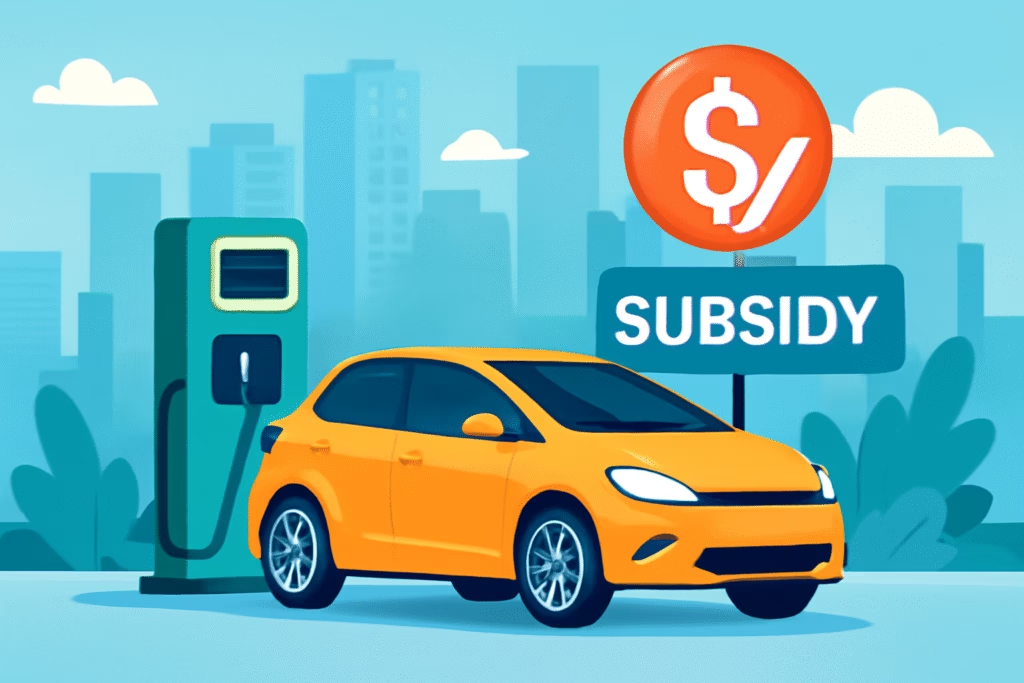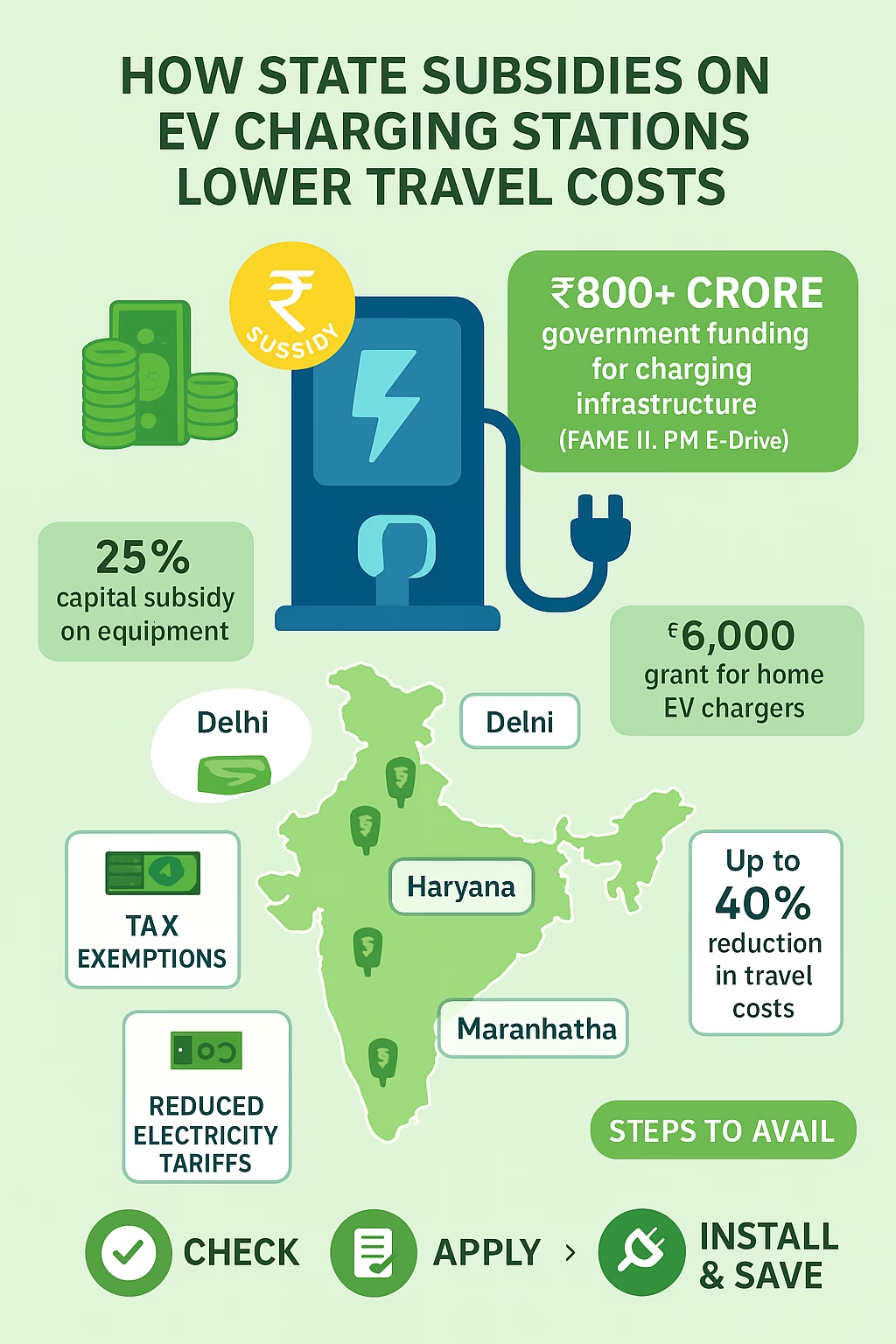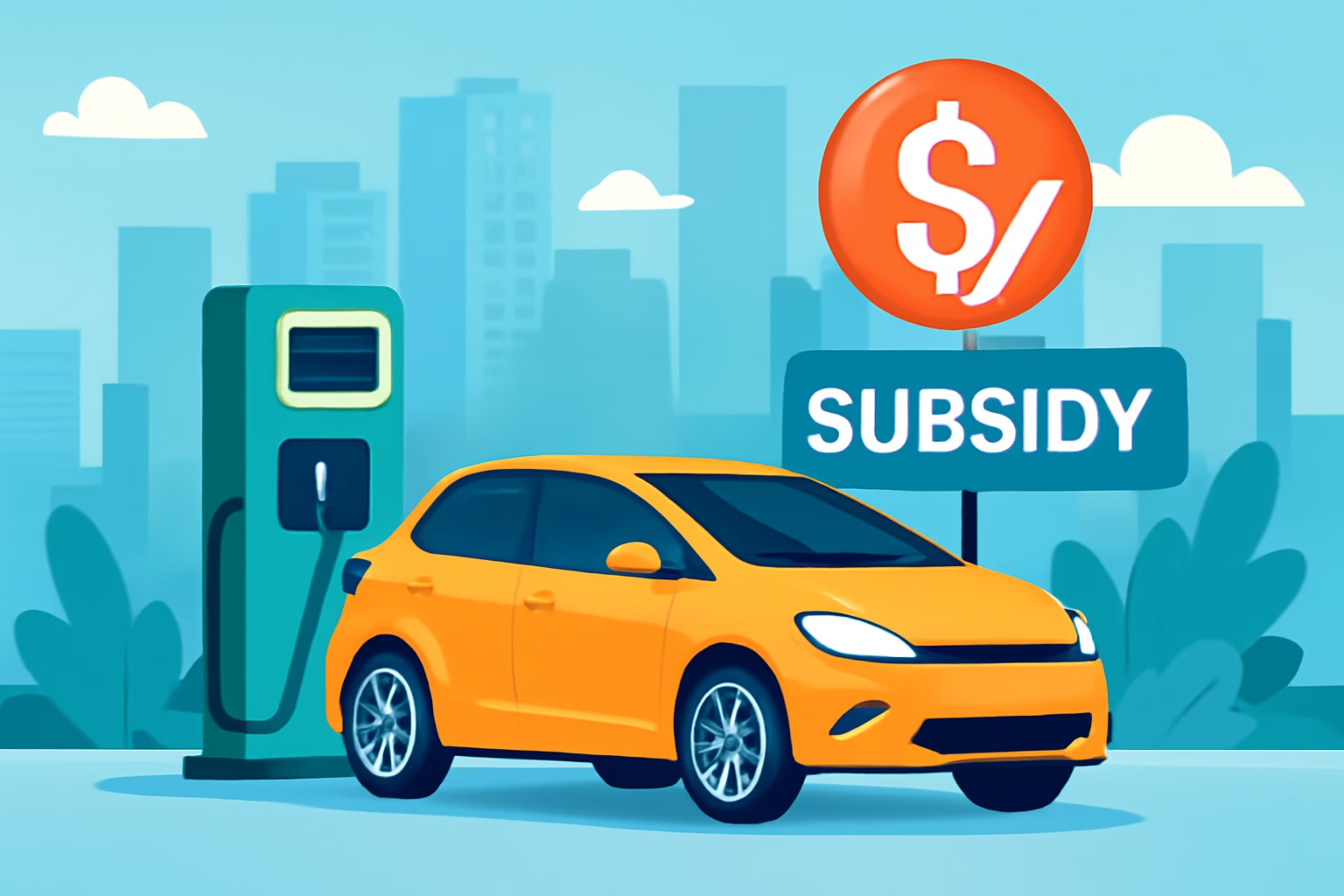In today’s fast-changing automotive landscape, the electric vehicle (EV) revolution is picking up speed. As more drivers switch to EVs, one question becomes central: How can you keep travel costs low when charging your electric vehicle? The answer lies in a major force shaping the EV industry—state subsidies on EV charging stations. These incentives not only help you save money up front, but also make every trip in your EV more budget-friendly in the long run. In this article, we’ll dive deep into how state subsidies on EV charging stations can lower your travel costs, and why now is the best time to take advantage of these benefits.

The Landscape of State Subsidies on EV Charging
Governments across India, and globally, recognize the need for clean transportation. To make EVs more accessible, both central and state governments have launched attractive incentives for electric vehicle owners and those setting up charging stations. These state subsidies can make establishing and using EV charging stations significantly more affordable for everyone, from individual car owners to fleet operators and small business owners.
What Are State Subsidies on EV Charging Stations?
State subsidies on EV charging stations are financial incentives provided by the state governments. These subsidies can take several forms:
- Direct grants for purchasing and installing charging equipment
- Reduced electricity tariffs specific for charging stations
- Discounted land offers for setting up infrastructure
- Tax exemptions for both individuals and companies investing in EV charging stations
The main goal of these subsidies is to reduce the overall cost of owning, setting up, and operating EV charging infrastructure, which in turn makes EV travel cheaper for drivers.
How State Subsidies Lower EV Charging Station Costs
1. Reducing Installation Expenses
State subsidies dramatically cut down the capital required to set up an EV charging station. Subsidies can cover a substantial percentage of equipment and machinery costs involved in installing both slow and fast EV chargers. For instance, the Haryana EV Policy provides up to 25% capital subsidy for charging station equipment, with a maximum cap per station. Grants through schemes such as FAME India Phase II also allocate funds to public sector companies for large-scale installation and expansion of charging networks, helping to cover crucial infrastructure costs such as transformers, cables, panels, and installation.
This upfront cost reduction means you pay less for every stage of the process—making private home charging stations, commercial units, or public fast-charging locations viable and affordable options.
2. Lowering Electricity Tariffs for EV Charging
One of the most direct impacts state subsidies have on your travel costs is through reduced electricity tariffs. Many states offer special energy rates or slabs for power consumed at EV charging stations, which are lower than commercial or domestic rates. These lower tariffs are key to offering cheap charging, especially at public fast-charging stations where costs can otherwise be high.
For drivers, this translates to lower per-kilometer costs on every trip—the more you drive and charge at subsidized stations, the more you save. This encourages longer trips, frequent usage, and even intercity travel, since drivers can reliably find affordable, subsidized charging on highways and in urban centers
3. Easier and Cheaper Access to Land
Setting up an EV charging station traditionally required major investment in real estate. Several state governments remove this barrier by providing subsidized land—sometimes up to 50% discounted—for charging station equipment manufacturers and operators. This initiative allows for a denser charging network and lowers the fixed cost per charging location, savings that can be passed on to the consumer in the form of lower charging fees.
4. Tax and Fee Exemptions
In addition to direct subsidies and grants, most states offer tax breaks for EV charging station infrastructure. This includes income tax deductions, capital subsidies, accelerated depreciation schemes on charging hardware, partial or full GST waivers, and exemptions on road tax for EV vehicles. All these measures contribute to lowering the total cost of ownership of both EVs and charging facilities, leading to cost savings for users and charging station operators. The effect? Lower charging prices for you and an overall drop in travel costs.
Is Hybrid Better Than EV? Hybrid vs EV in India 2025: Real Cost Analysis for Indian Buyers
Where Are the Savings Passed to EV Owners?
1. Lower Upfront Costs to Install a Home Charger
With subsidies in place, you can install a charging station at your home or workplace at a fraction of the previous cost. For example, in Delhi, the government offers a subsidy of ₹6,000 for light EV chargers for the first 30,000 private applicants. This covers the cost of hardware, installation, and three years of annual maintenance. Such incentives mean more households can afford to put in home chargers, making daily commuting cheaper and more convenient.
2. Cheaper Public and Commercial Charging
More public charging stations are being set up along highways, urban areas, hotels, malls, offices, and parking lots, most with subsidized infrastructure and lower energy rates. This ensures that users pay less when they need to charge outside their homes, effectively lowering the overall cost per distance traveled.
3. Lower Travel Costs Through Improved Network Coverage
The expansion of a subsidized charging network across highways and cities means fewer detours, shorter waiting times, and competitive pricing. For travelers, especially those making intercity journeys, the availability of fast-charging subsidized options means that long-distance travel by EV can become not only realistic, but also cheaper than conventional fuel alternatives.
Practical Examples and Case Studies
Delhi Government’s Single-Window Subsidy Scheme
Delhi has emerged as a leader in electrification, offering a wide range of incentives:
- Up to ₹6,000 subsidy per home charger (limited to one per applicant)
- Waiver of road tax for EVs
- Special low tariffs on electricity for EV charging
- A single-window system for fast and hassle-free installation
As a result, more residents are installing personal chargers and public locations now host many affordable charging points. This results in reduced travel costs for thousands of daily commuters.
Haryana’s Comprehensive EV Policy
Haryana’s EV policy is notable for its breadth of support:
- Up to 100% exemption on road tax for EVs
- Capital subsidy of 25% on charging station equipment
- GST reimbursements for charging hardware and advanced batteries
For EV taxi, fleet, and private owners, this means a dramatically lower cost structure, both up front and in ongoing travel costs, encouraging wider adoption and cheaper rides.
National Expansion: FAME India Phase II
Under the nationwide FAME India Phase II scheme, the central government allocated ₹800 crore in 2023 to install more than 7,400 public fast-charging stations across India. Placed strategically in high-density corridors, cities, and along highways, these stations ensure cheap, subsidized charging wherever your journey takes you.

State Subsidy Focus Keyword: Impact on Your Wallet
How do state subsidies on EV charging stations lower your travel costs in actual numbers? Consider this:
- Without subsidies, setting up a small charging station may cost ₹5-7 lakhs in total, not counting land and utilities. With subsidies and grants, this can be reduced by 30-60%, lowering start-up costs to as little as ₹2-3 lakhs.
- Subsidized tariffs shave off up to 50% from your charge compared to non-subsidized public charging.
- Tax breaks result in annual cash savings through direct exemptions or quick asset depreciation for business owners and companies investing in EV fleets.
- For end-users, such as private EV owners or fleet operators, these cumulative reductions can add up to thousands of rupees saved in travel costs every year.
Why These Savings Matter
State subsidies on EV charging stations lower your travel costs by making every stage—from installation to daily usage—less expensive. In regions with high EV adoption and dense charging networks, some users report annual travel cost reductions of up to 40% compared to running a comparable petrol or diesel vehicle. As more states jump in with generous incentives, these savings are set to accelerate further.
How to Access State Subsidies for Charging Stations
Getting these benefits is easier than many think:
- Check your state’s current EV subsidy policy—most are available via the official transport or power department websites, or utility provider portals.
- Apply online or through government empaneled vendors for home or commercial charging point subsidies.
- Retain installation and purchase records to claim reimbursement or grants.
- Opt for networked charging solutions that are officially recognized to maximize available benefits.
The state subsidy focus keyword also appears in application forms and public announcements, making it easy to track new offers and stay updated.
The Path Ahead: More Savings, Greener Mobility
As EV use grows, state subsidies on EV charging stations continue to shape the market, driving down travel costs and making sustainable mobility mainstream. Future policies are likely to become even more inclusive—extending to fleet operators, rideshare providers, and rural users, ensuring the subsidy focus keyword stays central to India’s mobility story.
With the right policies, the gap between electric and internal combustion engine vehicles—on both upfront and running costs—will only get smaller. State subsidies not only lower travel costs but help lay the foundation for a mass transition to clean, green transport.
FOLLOW TIME OF HINDUSTAN ON FB
In conclusion, state subsidies on EV charging stations lower your travel costs at every level—whether you’re installing a home charger, relying on public fast-charging routes, or operating a business fleet. By reducing installation expenses, slashing tariffs, granting tax breaks, and ensuring network expansion, these incentives make EV travel more practical, affordable, and attractive than ever before. If you’re considering a switch to electric, there has never been a better time to leverage the many state subsidy options available—your wallet (and the planet) will thank you.
Remember to always check current state-specific offers and apply for eligible benefits on all your charging and EV travel expenses. By consciously using state subsidies on EV charging stations, you’re not only lowering your own travel costs, but also driving India closer to a sustainable transportation future.

